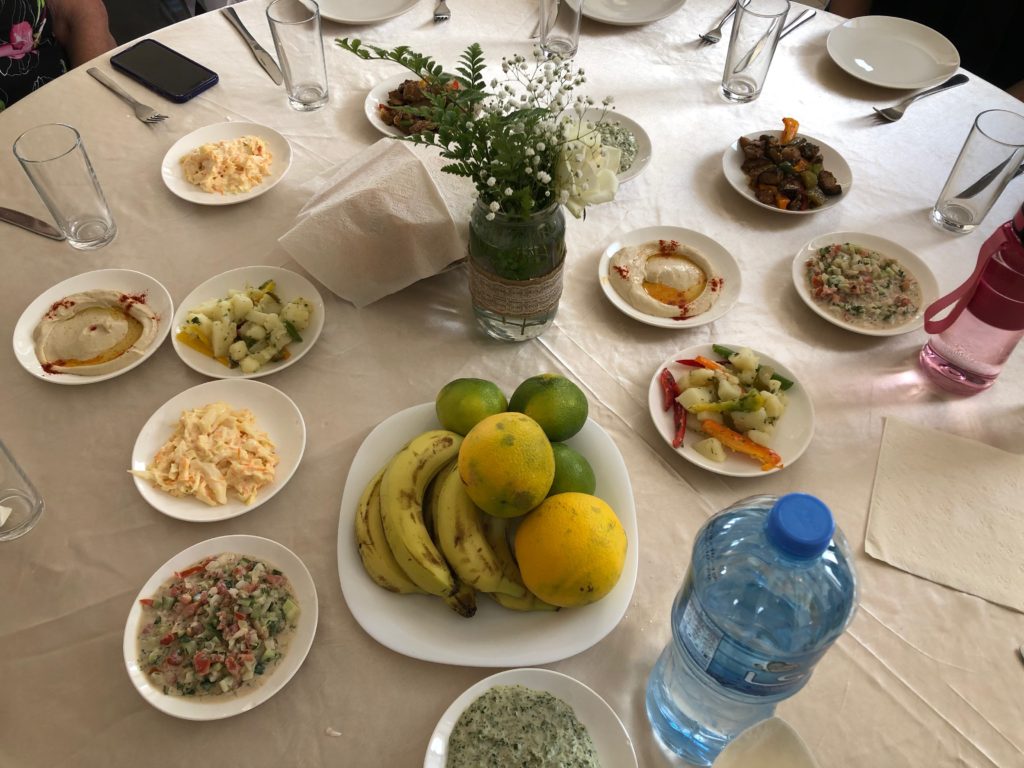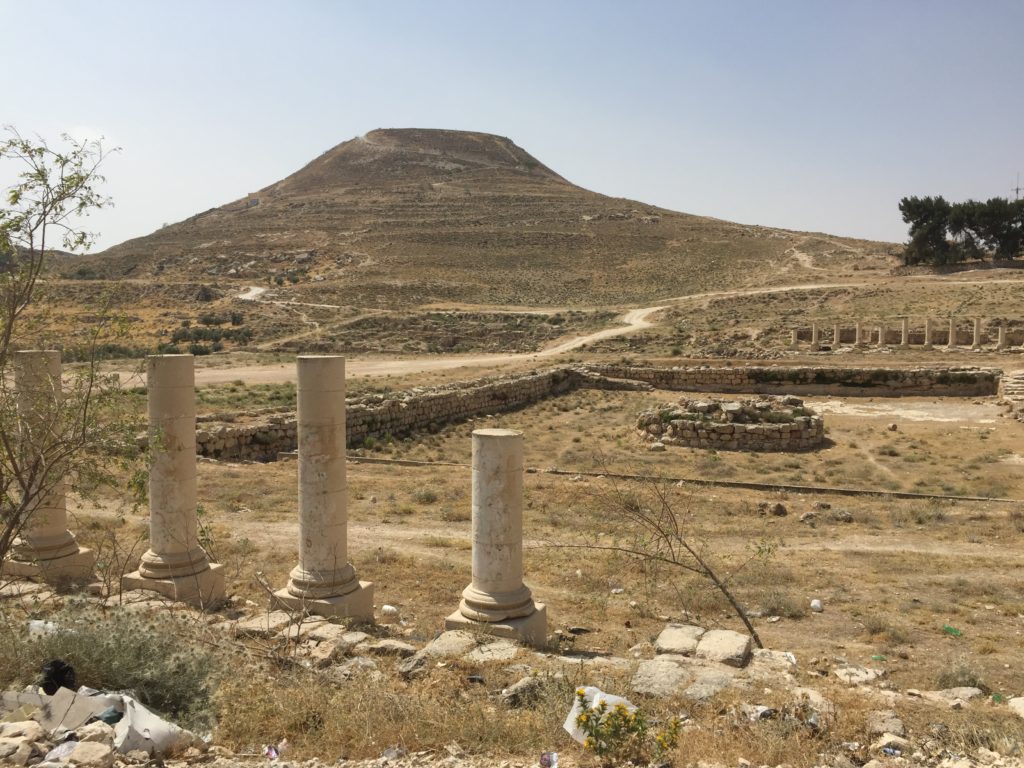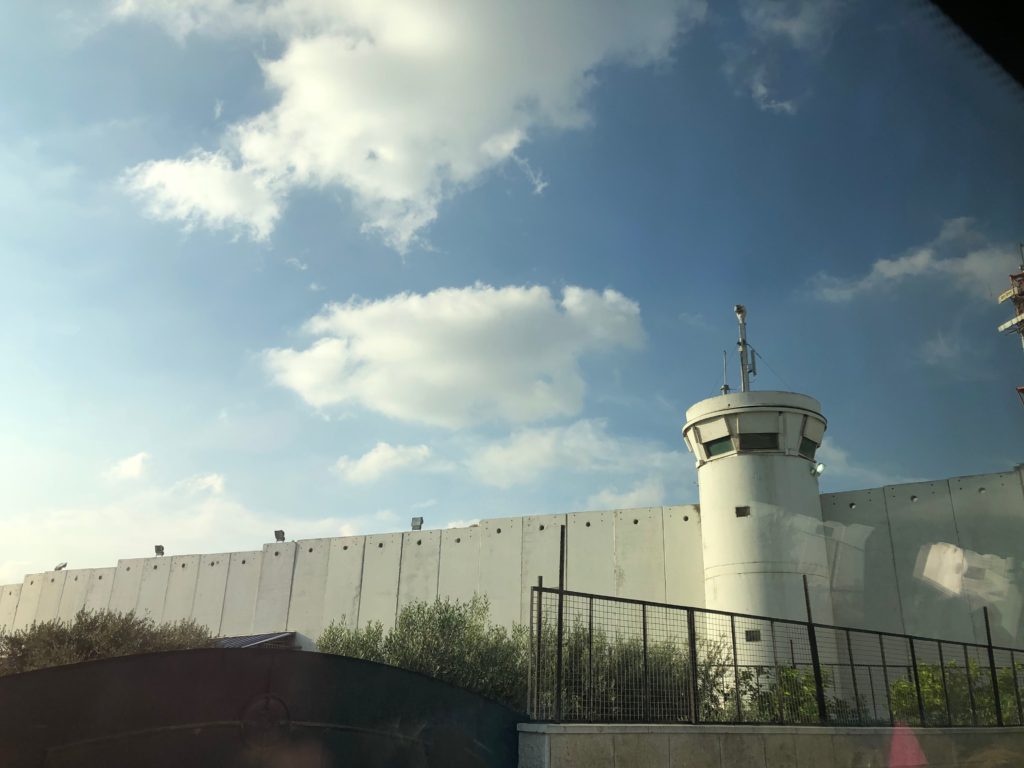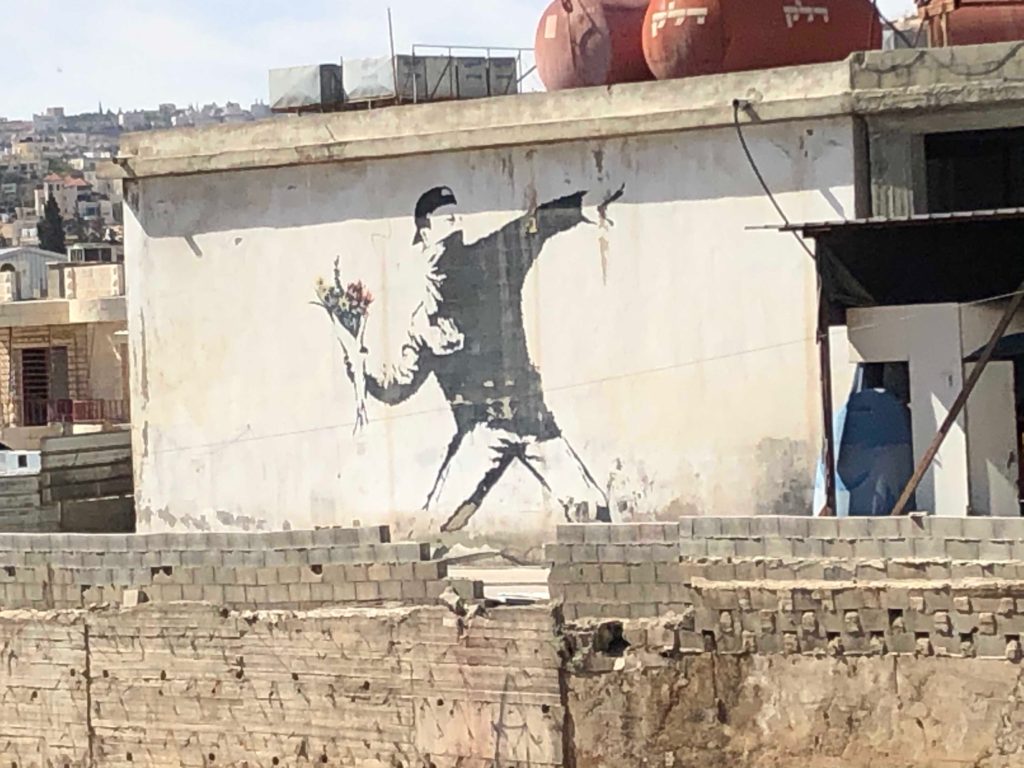18 Oct, Laura Deming
Our second full day in Bethlehem has been as varied and full as the first; ‘no time for jet lag. Every meal is fresh and delicious, with wonderful coffee and, new to me, green, orange-like, juicy, sweet fruit.

Today I was moved by the serenity of Shepherd’s Fields in Beit Sahour. Our absolutely amazing guide, Usama, speaks many languages and explains history with word translations. He suggested that the “good news” of Jesus’s birth was given to shepherds instead of powerful people, who would have likely kept it to themselves. The cave floors (where shepherds sheltered their sheep) had beautiful tiles that were moved from 6th c. Byzantine churches, long gone. Before us was a panorama of Palestinian housing threatened with demolition, olive groves, Jewish settlements, and a wall of electric wire or stone dividing them.

From there we approached the Herodion by bus. Something about the mountain seemed unreal. In fact, King Herod ordered that the original mountain be doubled so his kingdom could view both Jerusalem and Bethlehem and serve as his future burial site. That dry, hot, dusty, ancient ruin was contrasted by a visit to Dar Al Kalima University College of Arts and Culture, a vibrant, inspiring school with students eager to hear where we lived.

Nothing prepared me, though, for later that afternoon when we passed through a check-point to visit Dalia Landau, the Jewish subject of The Lemon Tree: Usama, who had a permit to enter Israel from the West Bank, had to get off our tourist bus, walk through the Palestinian pedestrian checkpoint, and meet us on the other side. He did it humbly and without rancor. He is devoting his life to conflict resolution through the Wi’am Center in Bethlehem and helping educate others, like me, who have only the vaguest understanding of what life is really like without independence. The famous, original Banksy graffiti is a reminder of the daily reality for Christian, Muslim, and non-religious Palestinians.

